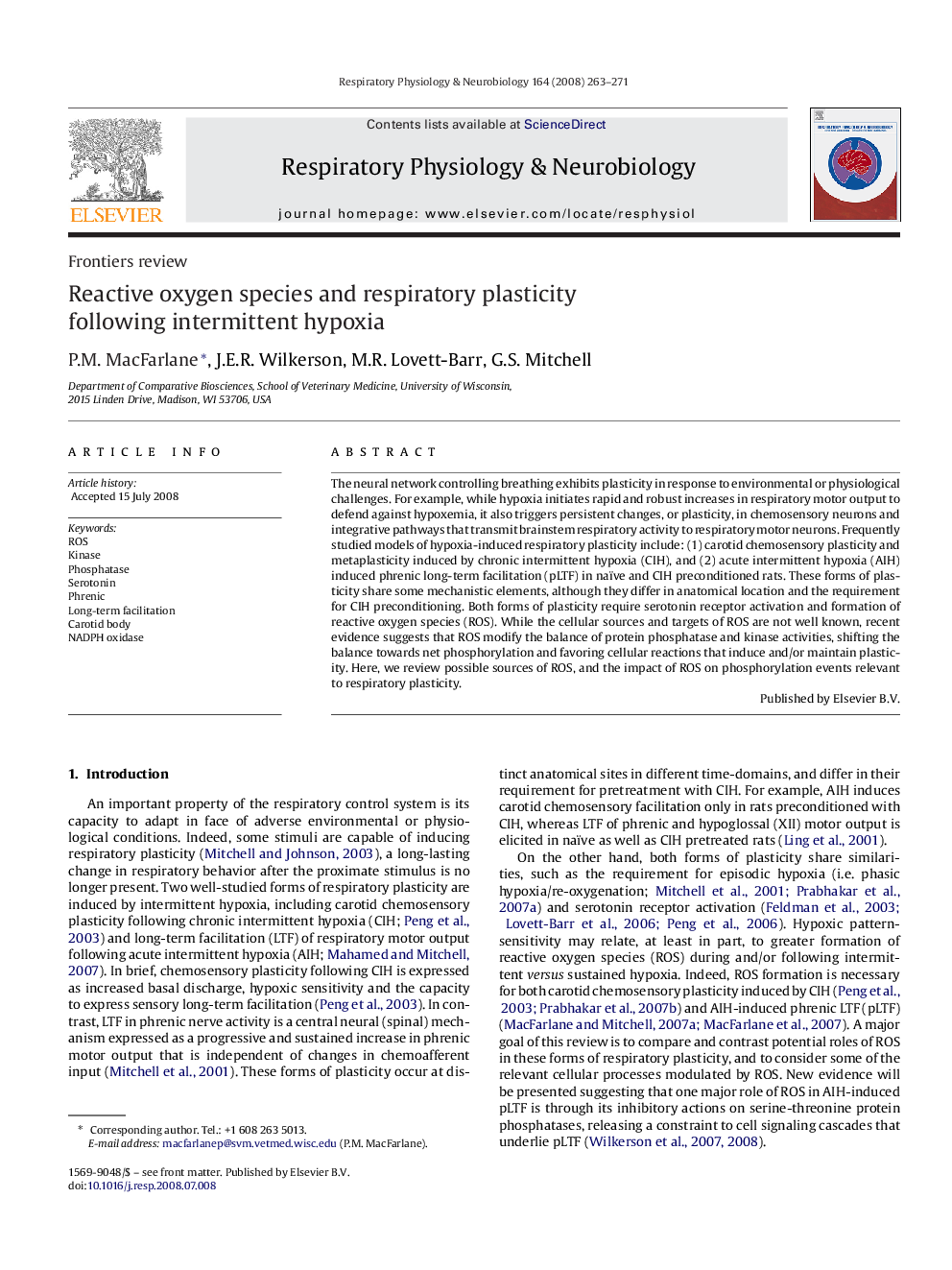| کد مقاله | کد نشریه | سال انتشار | مقاله انگلیسی | نسخه تمام متن |
|---|---|---|---|---|
| 2847961 | 1571348 | 2008 | 9 صفحه PDF | دانلود رایگان |

The neural network controlling breathing exhibits plasticity in response to environmental or physiological challenges. For example, while hypoxia initiates rapid and robust increases in respiratory motor output to defend against hypoxemia, it also triggers persistent changes, or plasticity, in chemosensory neurons and integrative pathways that transmit brainstem respiratory activity to respiratory motor neurons. Frequently studied models of hypoxia-induced respiratory plasticity include: (1) carotid chemosensory plasticity and metaplasticity induced by chronic intermittent hypoxia (CIH), and (2) acute intermittent hypoxia (AIH) induced phrenic long-term facilitation (pLTF) in naïve and CIH preconditioned rats. These forms of plasticity share some mechanistic elements, although they differ in anatomical location and the requirement for CIH preconditioning. Both forms of plasticity require serotonin receptor activation and formation of reactive oxygen species (ROS). While the cellular sources and targets of ROS are not well known, recent evidence suggests that ROS modify the balance of protein phosphatase and kinase activities, shifting the balance towards net phosphorylation and favoring cellular reactions that induce and/or maintain plasticity. Here, we review possible sources of ROS, and the impact of ROS on phosphorylation events relevant to respiratory plasticity.
Journal: Respiratory Physiology & Neurobiology - Volume 164, Issues 1–2, 10 December 2008, Pages 263–271